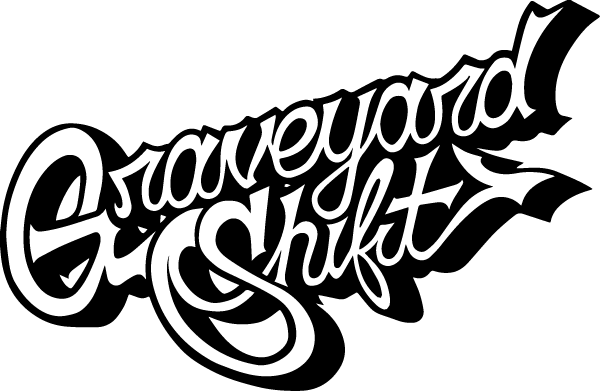The Evolution of Streetwear: Changing Demographics and Trends
Streetwear has evolved from an underground fashion movement to a mainstream powerhouse, influencing major designers and entire retail landscapes. This transformation is not just about clothes; it reflects shifts in culture, technology, and consumer behavior. Understanding the changing demographics and trends in streetwear is key for any brand or retailer looking to stay relevant.
The Origins and Rise of Streetwear
Streetwear initially emerged in the late 1970s and early 1980s, drawing inspiration from the skateboarding, surfing, and hip-hop cultures. It was characterized by oversized, comfortable garments, and often featured bold graphics or logos. The pioneers, such as Stüssy and Supreme, cultivated a sense of exclusivity and authenticity.
Key Characteristics of Early Streetwear
- Bold Graphics and Logos: Distinctive designs that often carried cultural significance.
- Comfort and Practicality: Emphasis on relaxed fits and durable materials.
- Subculture Influence: Deep connections with music, skateboarding, and surfing communities.
- Limited Releases: Scarcity and exclusivity drove higher demand.
The Changing Demographics of Streetwear Consumers
What once was a subcultural phenomenon predominantly consumed by young males has now diversified. Today, streetwear appeals to a broad spectrum of consumers across various age groups, genders, and socioeconomic backgrounds.
Gender Inclusivity
- Female Consumers: More women are embracing streetwear, prompting brands to offer gender-neutral or female-specific lines.
- Gender Fluidity: Growing cultural acceptance of non-binary and gender-fluid fashion choices.
Age Diversity
- Older Demographics: Fashion-forward adults appreciate streetwear for its innovative designs and comfort.
- Younger Generations: Gen Z and Millennials are driving trends with their digital-savvy and brand-conscious choices.
Trends Defining Modern Streetwear
As the consumer base evolves, so do the trends shaping the streetwear scene. Understanding these trends will help brands align their strategies accordingly.
Digital Integration
- Online Drops: Limited edition releases on digital platforms create buzz and drive instant sales.
- Social Media Influence: Platforms like Instagram and TikTok are essential for brand visibility and trendsetting.
- NFTs and Virtual Fashion: Digital collectibles and clothing are gaining traction, blending streetwear with the metaverse.
Sustainability and Ethics
- Eco-Friendly Materials: Consumers increasingly prefer brands that use sustainable fabrics and production methods.
- Ethical Production: Transparency in labor practices is becoming a key factor for consumer loyalty.
Techwear
- Functionality: Techwear integrates high-performance materials and utilitarian design.
- Innovative Features: Waterproofing, multiple pockets, and modular designs are hallmarks of this sub-trend.
Brand Collaborations and Influences
Collaborations between streetwear brands and luxury fashion houses have reached new heights, enabling a cross-pollination of styles and cultures. These collaborations not only shape current trends but also expand brand reach.
High-Profile Collaborations
- Luxury Brands: Partnerships with renowned fashion houses bring a touch of high fashion to streetwear.
- Iconic Collaborations: Partnerships like Supreme x Louis Vuitton set new standards in the fashion industry.
- Celebrity Endorsements: Collaboration with celebrities and influencers drives brand credibility and popularity.
The Role of Technology in Streetwear
Technology plays a pivotal role in shaping the streetwear landscape. From production to retail, tech innovations are enhancing every aspect of the market.
Advanced Manufacturing
- 3D Printing: Facilitates rapid prototyping and production of intricate designs.
- Automation: Minimizes waste and increases efficiency in manufacturing processes.
Augmented Reality (AR) and Virtual Reality (VR)
- Virtual Try-Ons: AR and VR technologies allow consumers to try before they buy, enhancing the shopping experience.
- Virtual Runways: Brands are hosting digital fashion shows, making events more inclusive and accessible.
Consumer Expectations and Driving Forces
The modern streetwear shopper has high expectations, driven by a desire for uniqueness, quality, and ethical considerations. Understanding these driving forces can help brands better cater to their audience.
Desire for Exclusivity
- Limited Editions: Scarcity often drives demand and brand loyalty.
- Unique Designs: Consumers seek pieces that stand out and reflect personal style.
Quality Over Quantity
- Premium Materials: The use of high-quality fabrics and construction techniques.
- Long-Lasting Products: Greater focus on durability and timeless design.
Ethical and Social Responsibility
- Brand Transparency: Openness about production processes and corporate practices.
- Social Impact: Brands engaging in social causes or community projects gain favor among consumers.
Conclusion
The world of streetwear is dynamic and continually evolving, shaped by changing demographics, innovative trends, and technological advancements. Brands that can adapt to these shifts, stay authentic, and meet the high expectations of a diverse consumer base will find lasting success. As streetwear continues to blur the lines between various fashion sectors, its influence is set to grow even further, promising exciting developments ahead.
```
